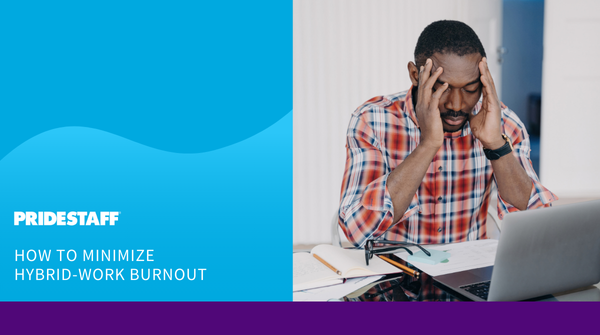Balancing Act to Minimize Burnout in a Flexible Work Environment

“Work smarter, not harder” takes on new meaning in today’s flexible work landscape. As we embrace hybrid work models, the challenge transcends balancing work and life—it becomes about creating an environment that supports both efficiency and well-being.
Since connectivity can extend our work hours well beyond 9 to 5, it’s imperative for employers to advocate for smarter work practices that prevent burnout and foster a culture of productivity without the constant grind.
Here are 10 actionable strategies to aid employers seeking to weave a safety net against the pressures of ’round-the-clock’ work culture:
- Set Clear Expectations. Begin by defining the expected work hours and response times. Encourage your team to respect these boundaries to ensure everyone has time to recharge.
- Encourage Regular Breaks. Promote the necessity of taking short, regular breaks throughout the workday to step away from screens and workstations, whether in the office or at home.
- Provide Mental Health Support. Mental health should be a non-negotiable pillar of your company’s health benefits. Offer resources like employee assistance programs and encourage their use.
- Offer Flexible Scheduling. Embrace true flexibility by allowing employees to adapt their working hours to their peak productivity periods and personal commitments.
- Foster a Company Culture of Respect for Time Off. Discourage the culture of 24/7 availability, especially during weekends and vacations. Respect for personal time should be ingrained in the company ethos.
- Prioritize Well-Being. Have managers regularly touch base with their teams, not just about work progress but also concerning their well-being.
- Invest in Training. Provide training that enables employees to navigate and maximize the potential of a hybrid work environment, including time management, digital tools, and self-motivation techniques.
- Set Regular Virtual Check-Ins and Team Meetings. Set a cadence for regular team meetings and one-on-one check-ins that accommodate both remote and in-office staff to reinforce inclusivity and team cohesion.
- Lead by Example. Management should model the integration of in-office and remote work by participating in and valuing both scenarios, demonstrating that both are critical to the success of the organization.
- Feedback Loop. Create a mechanism for employees to provide feedback on hybrid work strategies and policies—and be prepared to make adjustments based on their experiences and suggestions.
Prevent Employee Burnout Before It Begins
Temporary staffing makes it easier for permanent employees to take deserved breaks, vacations, and leaves of absence without the worry of coming back to an unmanageable pile of work.
Partner With PrideStaff
Build a workplace that thrives on balance and employee satisfaction! Our staffing experts are well-versed in creating work environments that prioritize employee well-being while driving organizational success. Contact your local PrideStaff office to begin crafting a burnout-resistant blueprint for your hybrid workplace today.
Related Posts
Recognizing Burnout: Signs, Symptoms, and Strategies for Prevention



